
Developing a Content Strategy that Works – Important Things You Should Know
What is that one big problem you face in content creation?
Many persons are bothered about how to create content that engage their customers best, while others are most concerned about what exact content to create. All of these concerns are legit and are signs that you have the best interest of your brand at heart.
First, you need to understand that content parameters are usually interrelated, from strategy to marketing, and content creation. Meanwhile, the best way to help your content creation and engagement is to have a content strategy.
This article details on how to create meaningful and engaging content by developing a content strategy. Our focus is not just on how to create a content strategy, but on how to develop one that works – one that drives results.
The results you desire from content creation may vary: awareness, sales, engagement and much more. If your content strategy is effective, then you are bound to get your intended results and more.
What is Content Strategy?
A strategy is a plan of action designed to achieve or long-term or overall aim.
Content strategy is a plan of action or policy designed to use content, public or internal, to achieve objectives within a business or organization. It involves every aspect of content creation to dissemination such as topic and audience research, choice of information channel, and marketing technique. Content strategy begins with your content creation as a business owner and ends when the content reaches your audience and achieves your desired aim.
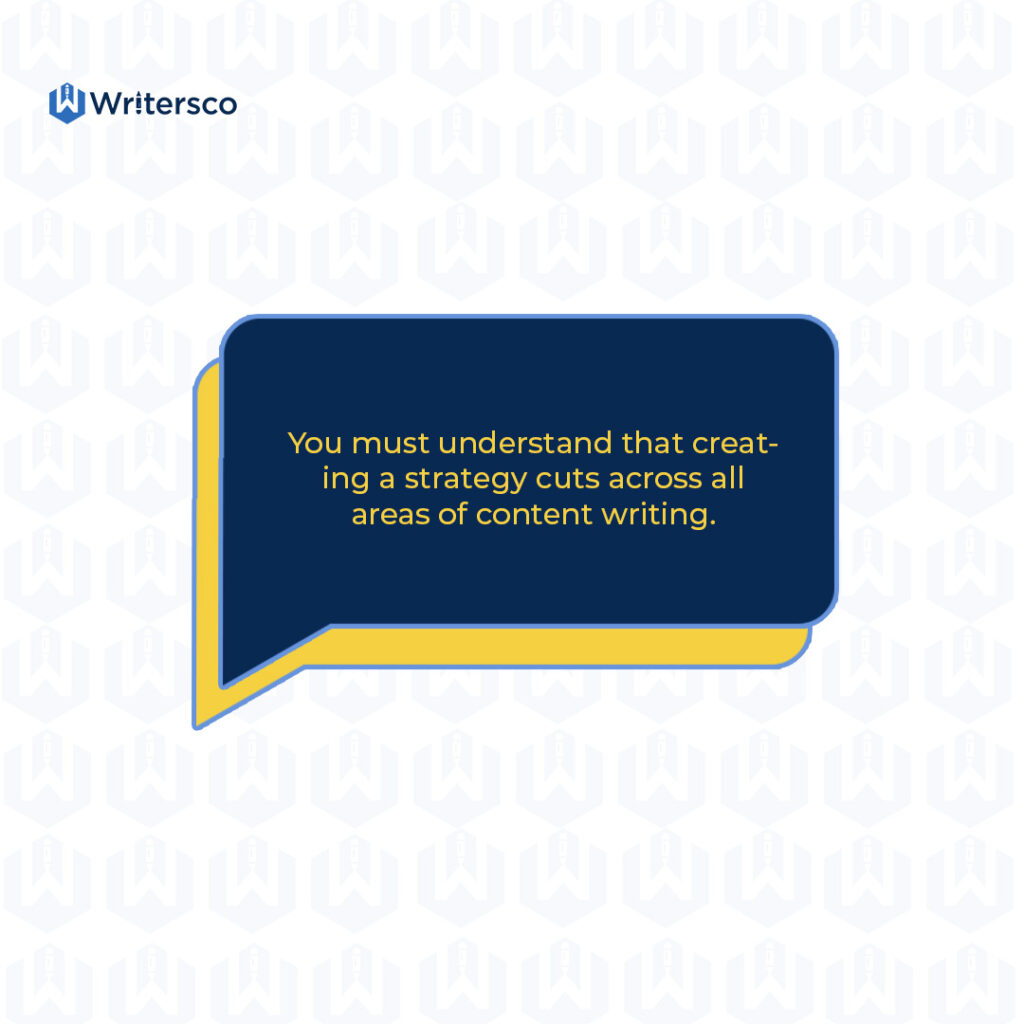
How to Develop a Content Strategy
In developing a content strategy (or any strategy for that matter), there are some questions you must ask:
- What are the goals to be achieved?
- What are the resources available?
- How do I measure results?
What are the Goals to be Achieved?
Your specified aim determines the strategy you will employ. Notably, one of the major reasons a content is not engaging is because it does not have a goal. It will be easier to create a strategy when there is a set goal to achieve.
A football team, for example, develops a formation to win or draw a game. The goal is to win or draw, while the strategy creates a working formation. The strategy or plan is just as important to them as the goal is.
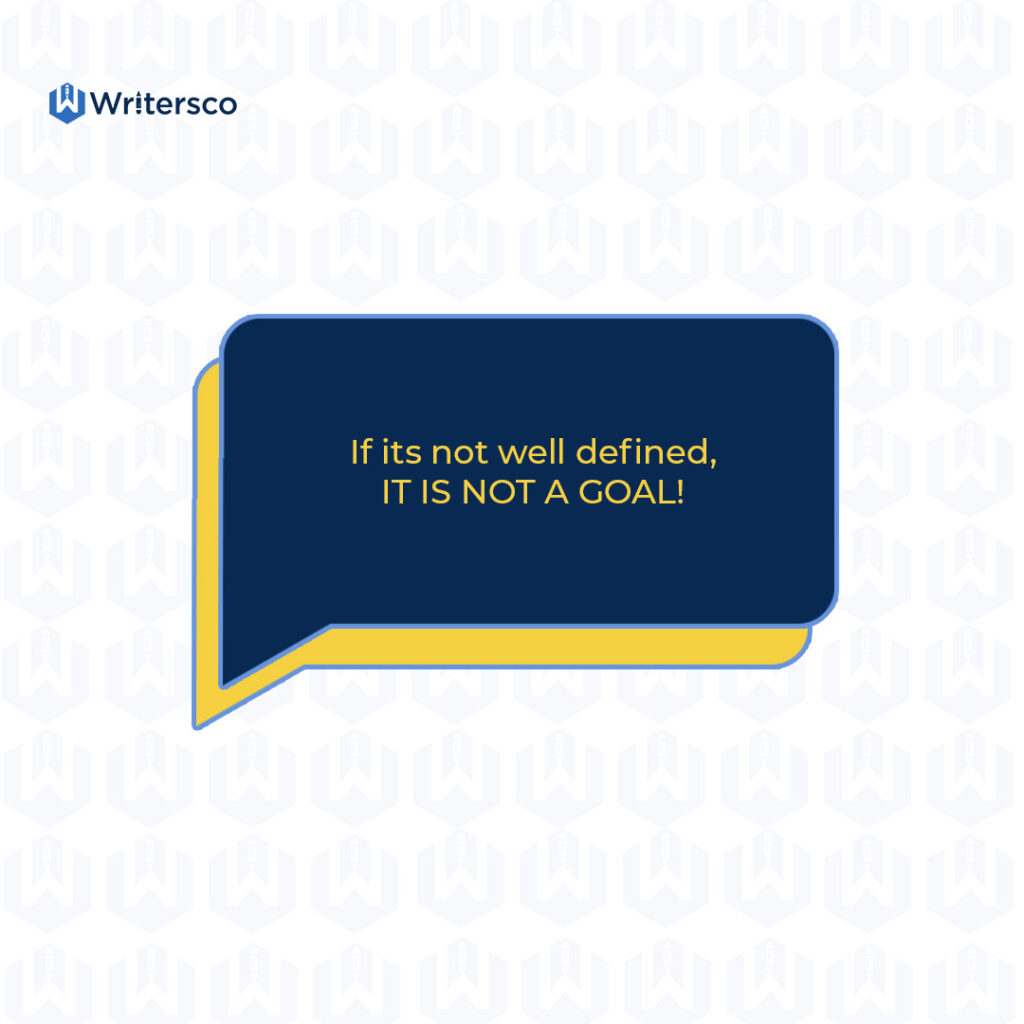
As a business owner, part of your content creation goals will include the following:
- Brand Awareness: This involves how familiar people become with your brand. The most popular reason business owners create content is to put them in the limelight amongst other businesses offering similar services to thiers.
- Leads: This deals with getting potential clients or prospects. If your aim is to get leads, then you are particular about getting people to know what your products or services are.
- Conversion: Conversion is the ultimate aim of any business strategy. This means getting your previous clients or new prospects to buy your product or service.
- Credibility: Credibility is all about people trusting you enough to request for your product or services later on.
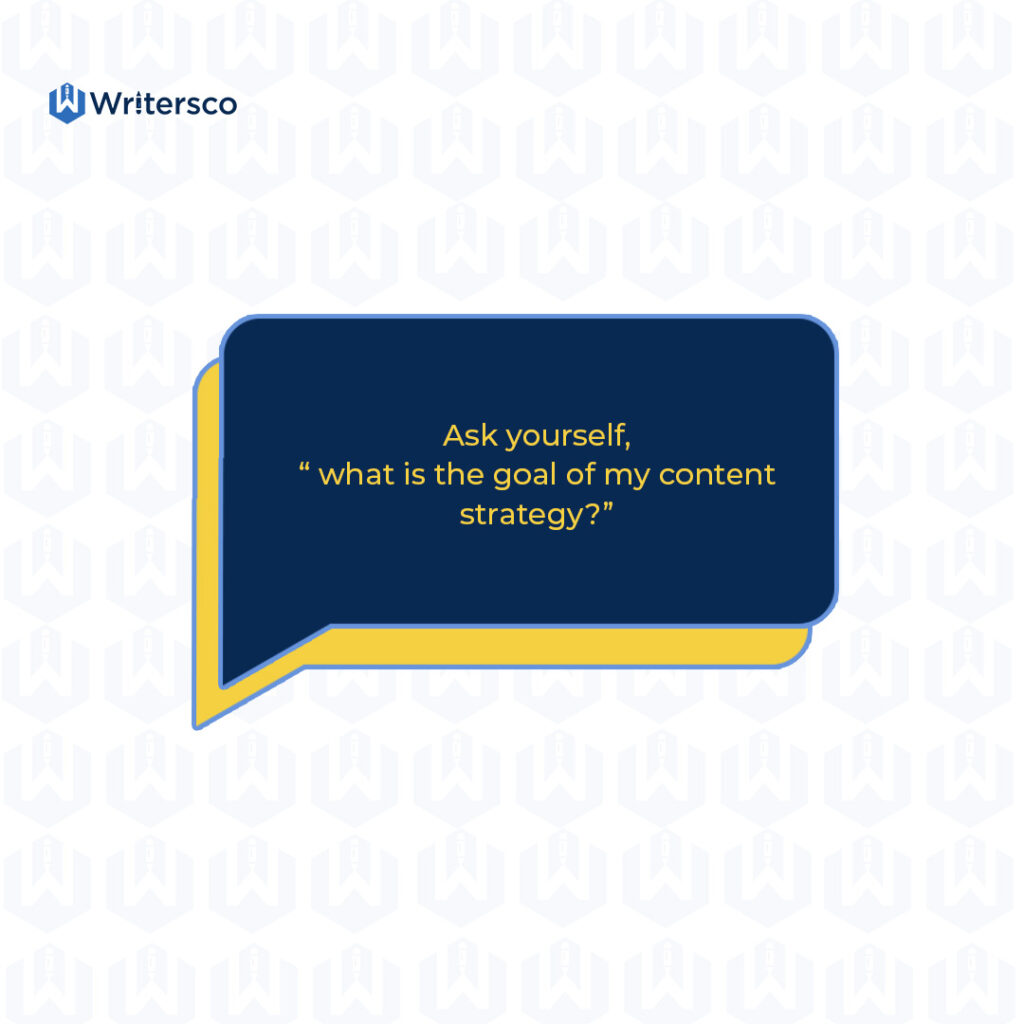
Although your content strategy can incorporate all three goals or more, it can also focus on only one goal. You could create content that serve as leads and would then lead to conversion. You can also create content for brand awareness only or create a sales content that strictly drives conversion.
What are the Resources Available?
The resources you have will determine the depth or extent of your content creation and can help you tailor your strategy to be more effective even with available resources.
As a content creator, you must identify the resources available for you. This could be in term of monetary value, available platform for content dissemination, credible information sources, and so on.
Business owners who can afford the luxury of promoting their website content through ads may be able to hit their goals faster. However, there are other ways business owners can improve visibility for their website without ads. In all, what matters is how you knowing what resources you have at your disposal and channeling them rightly.
How do I Measure Results?
You really cannot determine how effective your content strategy has been if you cannot measure your results. Therefore, you must have a system of measurement as a content writer.
The measurement technique to use will depend on what your primary goal is. These days, there are measurement packages that can help you analyze most of your content creation goals. There are several SEO sites that can help you track website visibility, engagement, external links, and so on. There is also the popular Google Analytics Setup, which is a very important tool for every business owner who is intentional about online brand awareness.
Measuring results can help you easily answer questions like “How many persons bought this product within this period?” “How many persons visited my website?” “How long did people linger on my website?” “What questions are my prospects asking?” and so on.
Meanwhile, if you don’t measure your results, you can’t improve because you will not see the need to. You wouldn’t even know if you are getting closer to achieving your goals or you are drawing farther away.
The Driving Forces of an Effective Content Strategy
About 1-2% of the people on the internet are content creators, while the remaining 98 to 99% of internet are content consumers. Although it seems that there is a ripe field for content creators to glean, only 2 or 3 content creators thrive out of every ten.
It is worth knowing that 75% of articles have zero external links and only 50% have reasonable interactions.
What does this mean?
The truth is that nobody cares about your passion. Creating content is not about passion or what you feel like writing. Content creation has a lot more to do with who your readers are – the content consumers.
For example, at WritersCo, “Our content is where [audience x} gets {information y} that offers them [benefit z}.”
Notice that there are three main parameters:
- Audience [x]
- Information [y]
- Benefit [z]
Audience [x]
Do you know that one of the questions you should always ask yourself before posting any content is “who am I posting for?” You may feel frustrated if you create content that attend to the wrong audience or do not know how to create the proper content for the right audience.
Amongst your general audience, you can also have subsets of different kinds of audience. For example, existing customers and prospects make two different types of audience, and the way you will interact with them may be different.
Therefore, for every content you are putting online, you should take note of the following:
- Who your customers are
- The customer persona
Identifying who your audience is for specific website content will help you identify their persona pretty quickly. Getting to know your customer persona involves asking questions like: what are my customers doing? When are they most active online? What is there age range? How well do they follow online trends and so on.
One thing that can help you become specific in reaching out to online audiences is to have a specific customer set that your business reaches.
If you sell shoes, who are your buyers?
Do not try to give a generalized answer like “everyone that needs shoes” Be specific as possible!
As a shoe seller, you can’t possibly sell all kinds of shoes at the same time. Likewise, you can’t be writing content for difference audience sets and expect to meet their needs adequately. Therefore, identify the kinds of shoes you’re selling, the specific audience that needs them and be clear about your goals to that audience.
In meeting your audience needs through content, you must also understand buyer and user standpoints in business interactions. These are different sets of people. Buyers buy a product, and users are those that use the product. For example, the buyer of your product can be a parent, while the user will be the child. Therefore, in such a case, your marketing and information content should be more tailored to suit the buyer than the user.
Information [y]
The information you give out to your audience is the center of your content. Developing a website content strategy can never be complete without knowing what information you are sharing.
Asides from the gist of your content, there is also the proper way to share it. There are different kinds of website content such as
- Blogs/articles
- How-tos
- Topics/subject matters
- Statistics/trends
- Hacks
- Roundups
- Ultimate guides
- Social media content
- Press releases
- Whitepapers
- Videos and podcasts
- Original research
Each of these information channels work differently and suit only certain kinds of audiences or information type. You should care to figure out if your audience prefesr to watch videos of you on YouTube or check out your sizzling posts on social media. When creating website content too, make sure your information channel suits your content. Some subject matters are best discussed as trend stories, others are more fitting as press releases, while some other kinds of information go well with “how to” topics.
Precisely, when you have a goal in mind, it will determine what you are going to write. And the information you are giving out to your customers will also inform your content strategy.
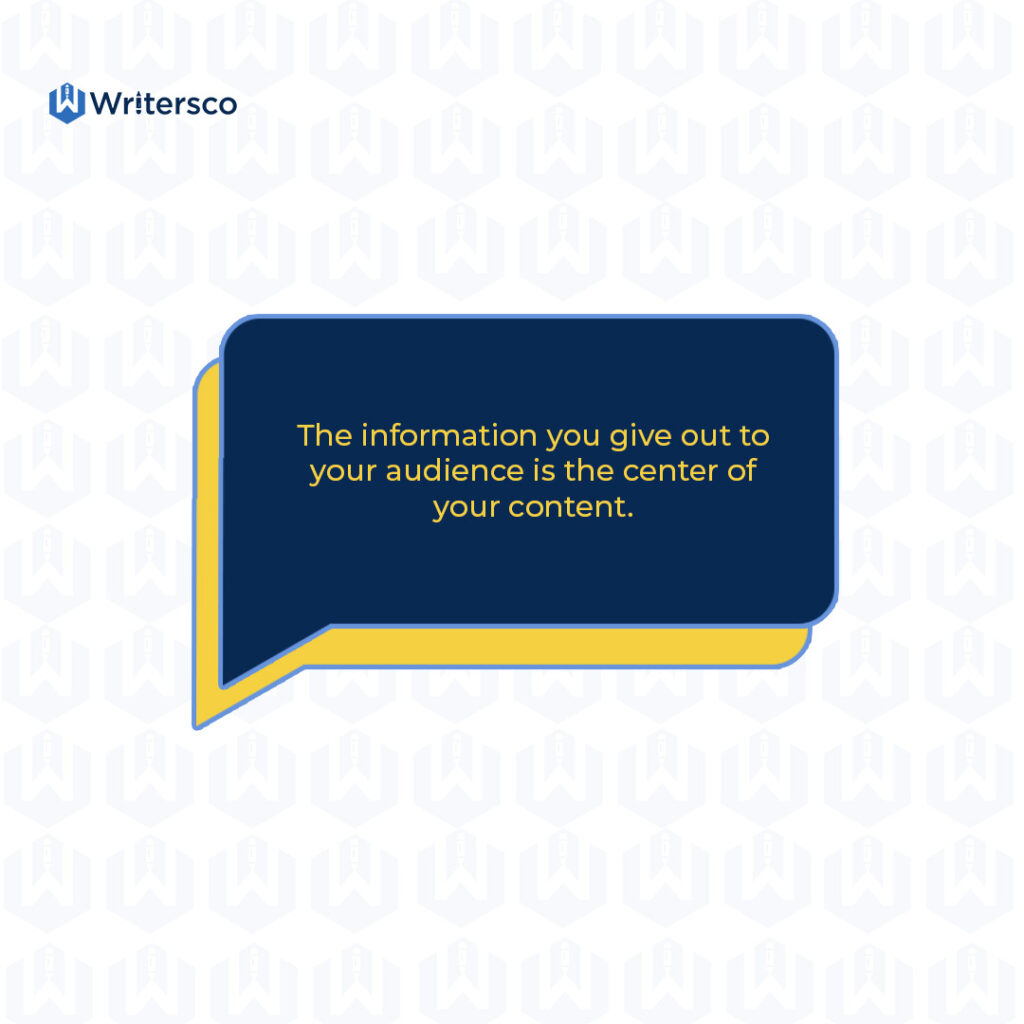
Benefit [z]
When we talk about benefits in developing a content strategy, do not think of it in the light of what you stand to gain, but rather what your audience would gain when they read your website content. Therefore, put yourself in your audience’s position and answer these questions:
- What’s in it for me?
- Why should I read your content?
- How does your content resonate with my core values and preferences?
- Add other questions of benefit you think your audience would ask.
Your customers and prospective clients, who are inevitably your audience, always love to know what is in for them when they read your content. So developing a content strategy also deals with developing packages for your customers to benefit from.
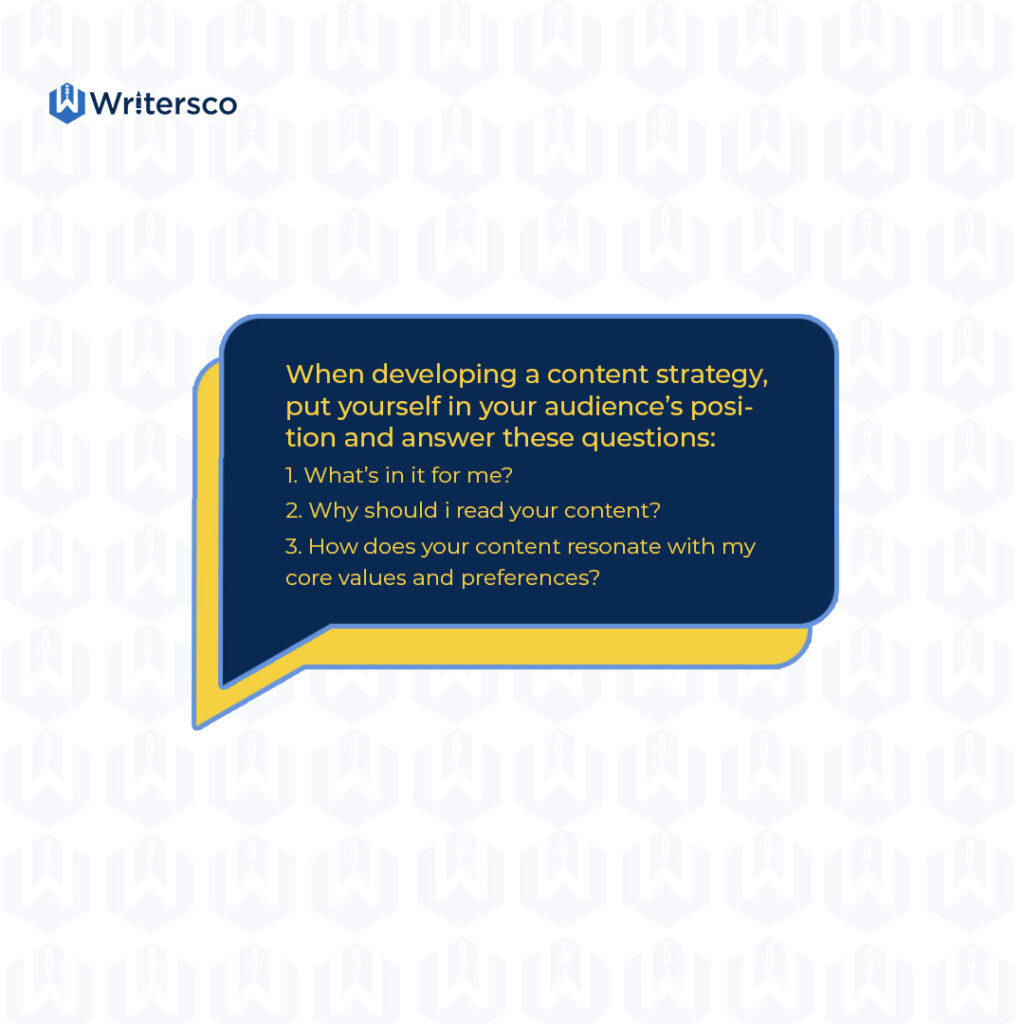
The benefits for your audience could be in the information you are sharing, entertainment, or even freebies that also serve as sales leads.
When creating content, do not hide those benefits from them. Keep them visible. Be specific about that one thing they will get which they will most likely not get from anywhere else.
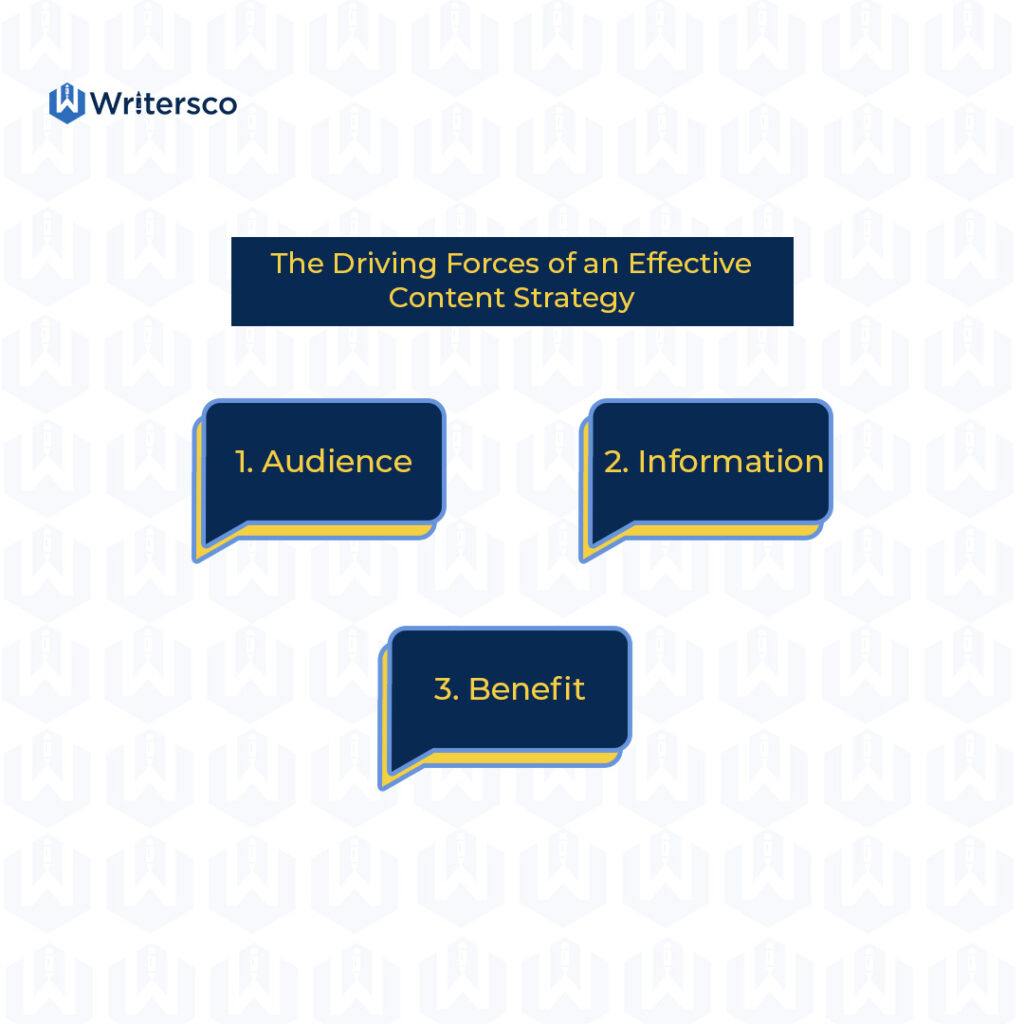
Way to Go With Developing Your Content Strategy!
Now that you know what entities are important in developing a content strategy that works, it’s time to get down to creating a content strategy of your own!
Remember that in explaining the driving forces of an effective content strategy, I used WritersCo as an example:
At WritersCo, “Our content is where [audience x} gets {information y} that offers them [benefit z}.”
Now, let’s try to fleshen things up a bit. Here is what our content strategy looks like at WritersCo:
At WriterCo, our content is where [audience – business owners, writers, marketing mangers] get [information – on content marketing and writing, writing tips, content marketing tips, how-tos, content marketing trends, statistics] that help [benefit – to make their writing better, increase business sales, and brand awareness].
You would see that our type of audience determines the type of information we give out and that informed the benefits our audience stands to get.
We see you get the gist now. How far have you gone with your brand’s content strategy?
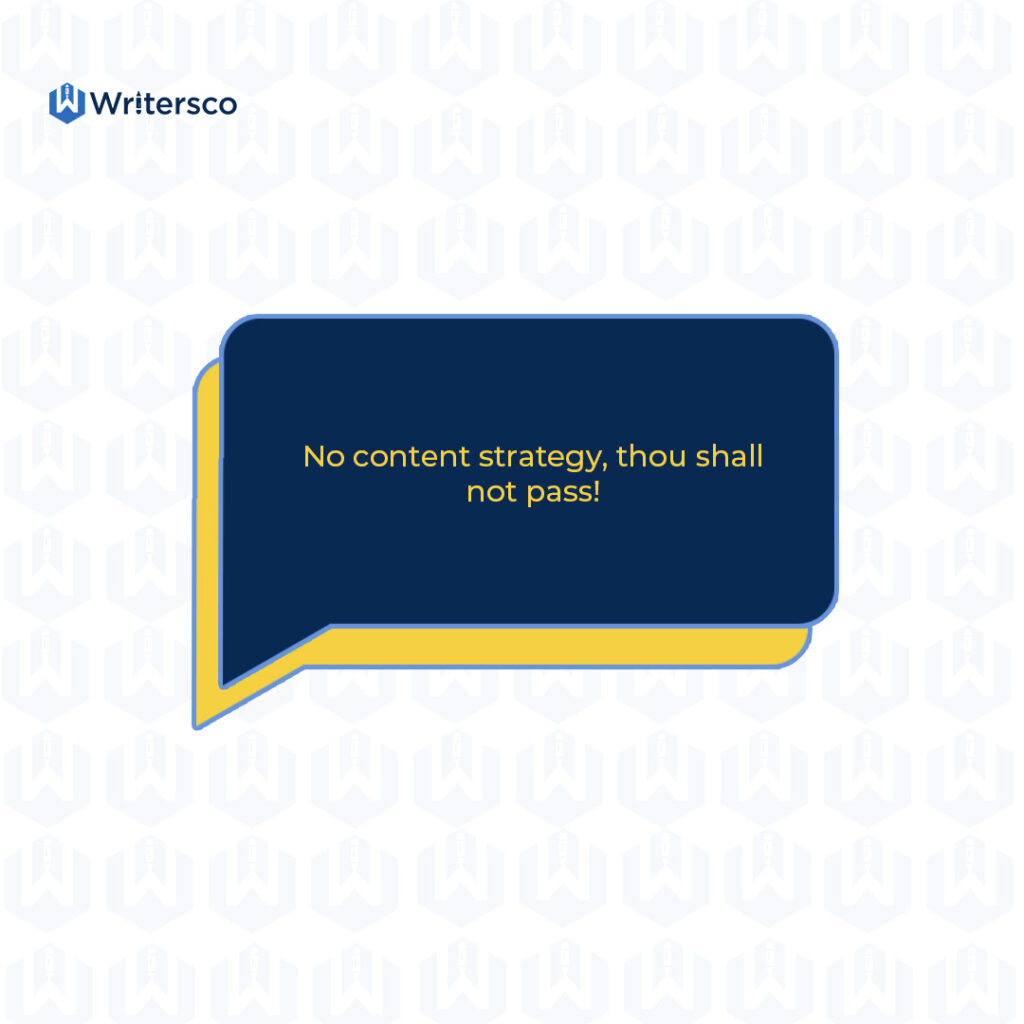
Way to go dear business owner, No one can stop your business now!
Hey, Wait, A Little Bit Further!
Hold on a little bit more honey, before we wrap it up on developing a working content strategy. Most online content are written content. Therefore, when creating content, always put the following on your mind to your advantage:
- Keyword
- Quality Content
- Domain Authority
- Link Authority
Keyword – Very Pivotal
Just in case you did not know this before, here is me hinting you that the use of the right keywords is very pivotal in effective content creation. Keywords or keyphrases are certain words or phrases that your customers would enter in search boxes to get the answers they need.
While the success of you content does not depend on the use of keywords alone, they play a large role in ensuring search engines like Google find your content worthy.
Luckily, there are free and paid tools you can use to recognize what keywords you could use in developing content for your business website.
Quality Content – We Cannot Emphasize this Enough
Again, this is an aspect of content creation that is largely underrated. A measure of your content’s quality will examine factors like how relevant your information is, the grammatical accuracy, use of pictorial representations, and so on, and so forth.
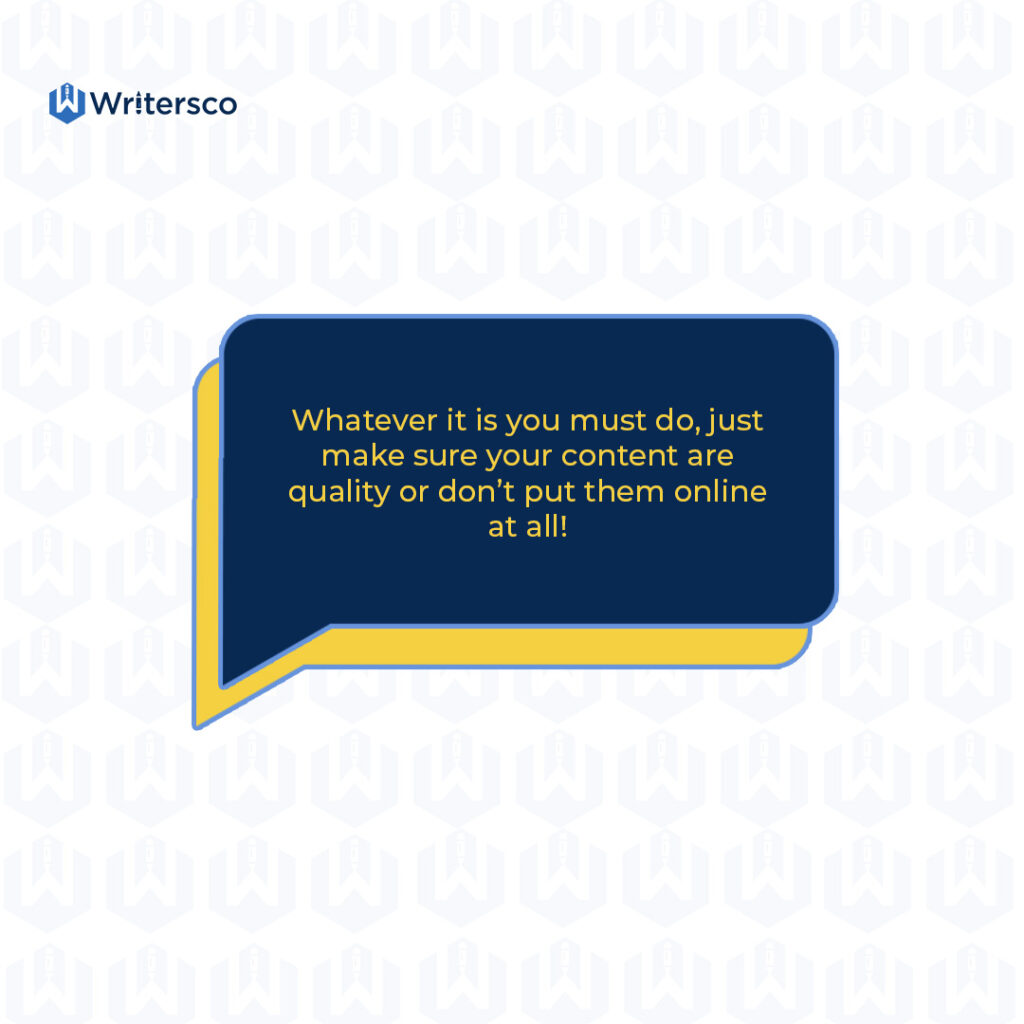
Domain Authority – A Bit Technical, but Equally Important
Domain authority talks about how well search engines like Google rate your website. Google has developed a ranking system that helps to put websites in hierarchy. Search engines trust a high-ranking website than other websites and will therefore put their content in search pages first. After all, they wouldn’t want to push content that will make readers frown their faces on the forefront.
These search engines believe that if your website can rank high base on their metrics, then the content you put out can be trusted. This is true of course, since content quality is part of what would make a website rank high in the first place.
Amidst other metrics, consistency is also very important. You can only rank with time and it may take about 3 months or more for Google to recognize your website.
The trick to this is that you must keep posting some quality stuff!
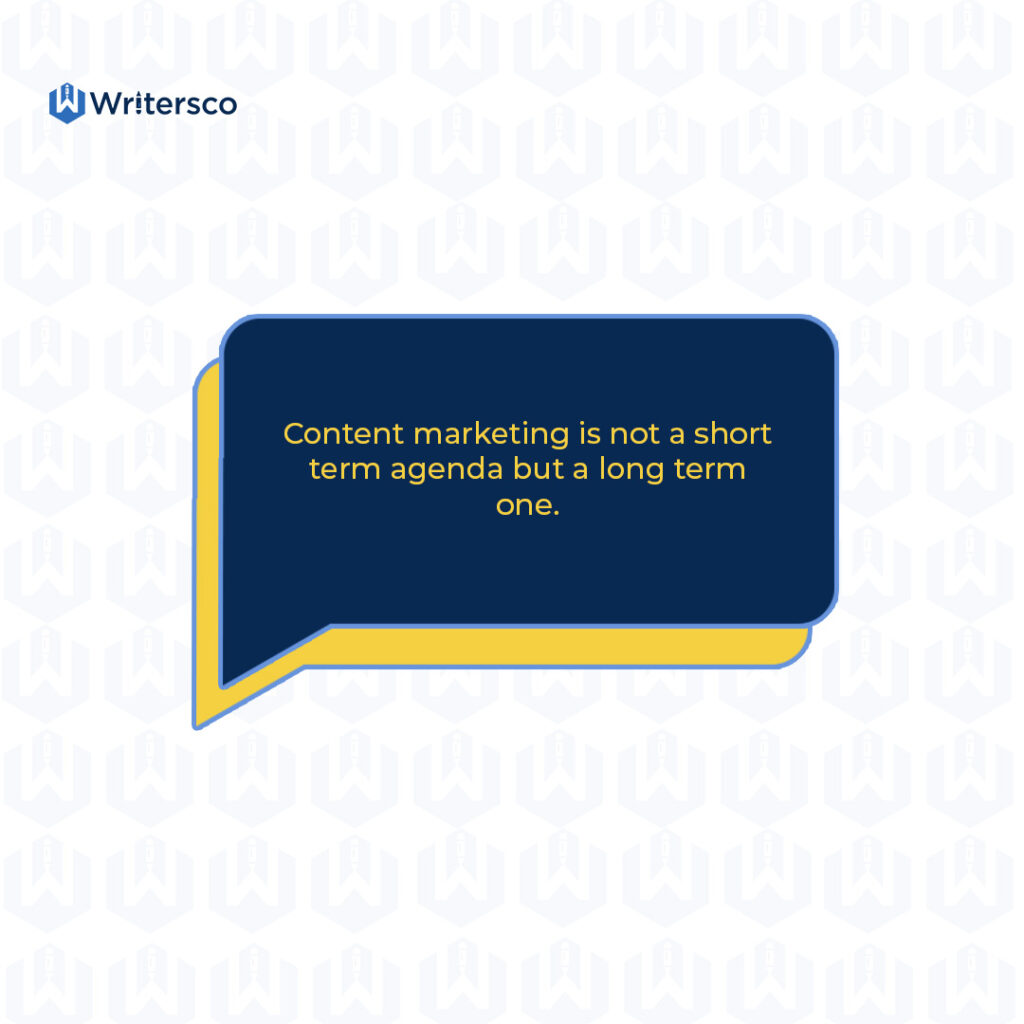
Link Building – The Last, but not the Least
This is all about getting other websites to link back to your website. That is, your content are so excellent that other content creators are eager to refer to them.
Does this reiterate anything familiar? Create quality and relevant content!
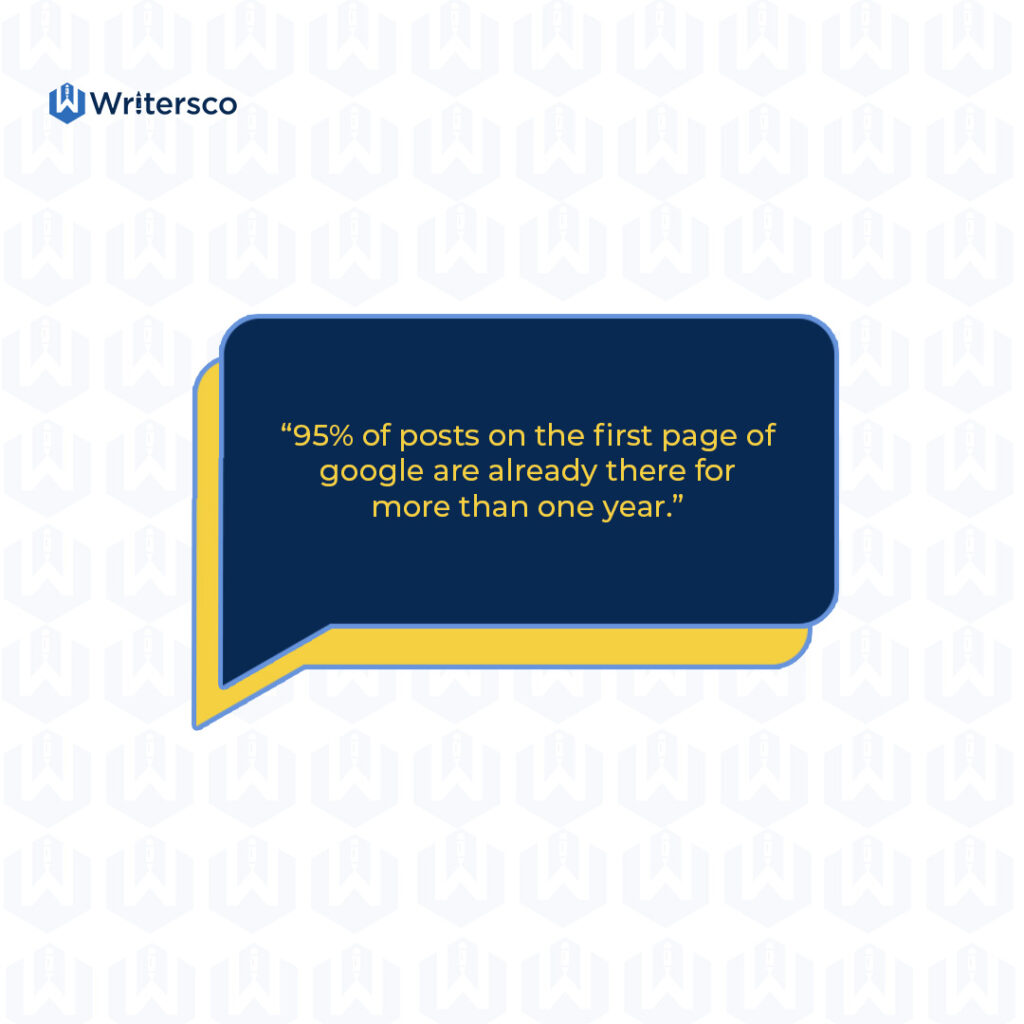
Conclusion
What Tommy Shelly Said:
“It ‘s all in the strategy, brother”
If after you reached this point, you are not on your way to creating a content strategy, what do we say at WritersCo? Go back, read some more, until you see the need to do so.
We bet it with you that your business is bound to obtain positive results through content marketing once you develop a content strategy.
While having a strategy is important, we do not pressure you to have it all figured out in one minute. Take your time to employ all the tips given on this page.
The goal is to have a structure for yourself, but don’t think you will figure out everything on the spot.



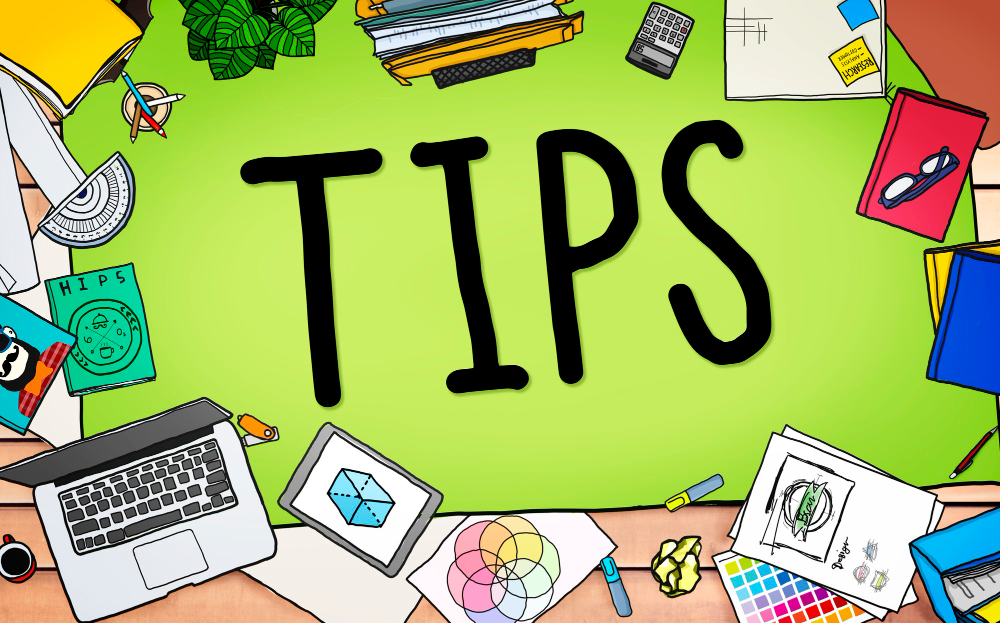

Permalink
Permalink